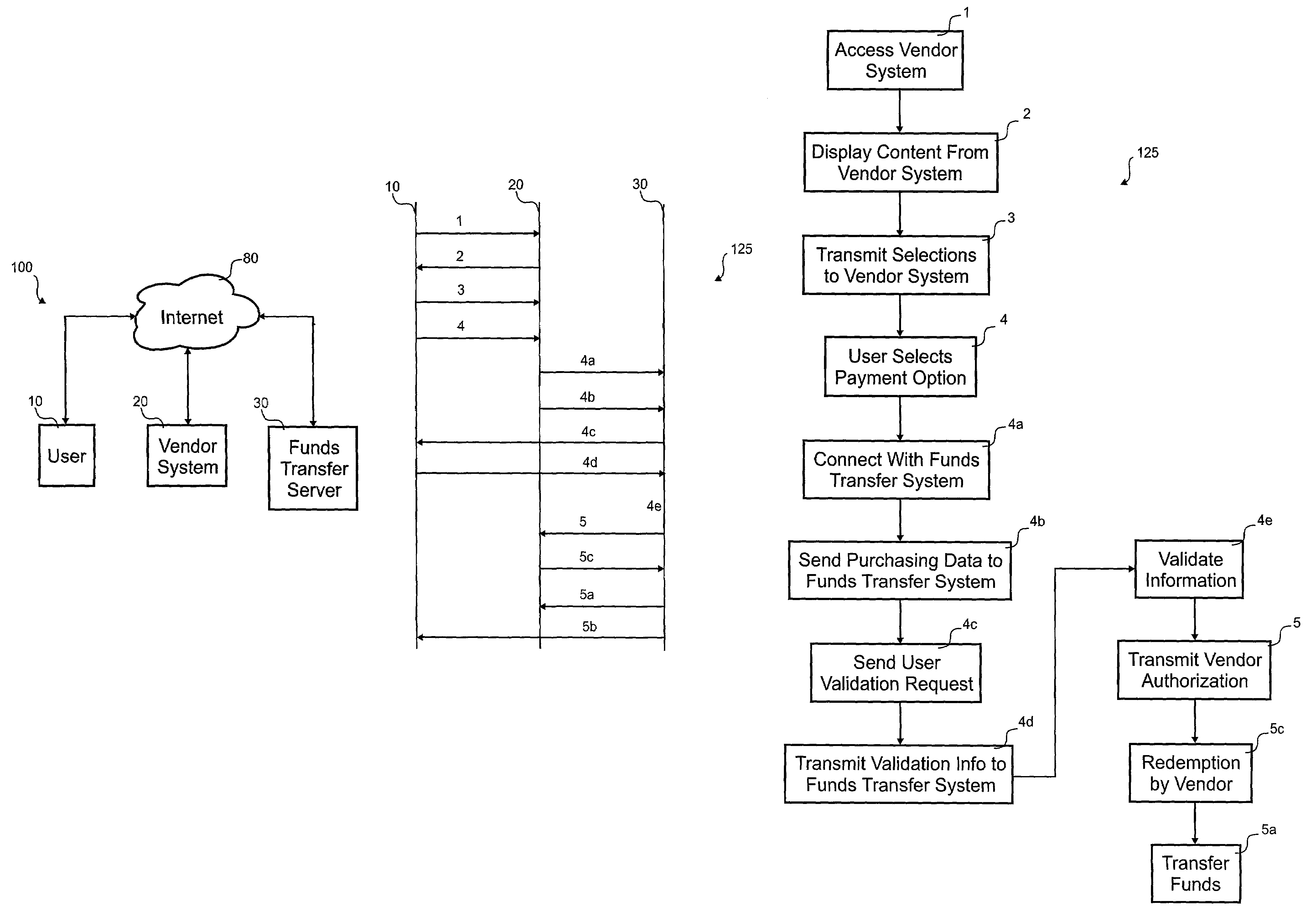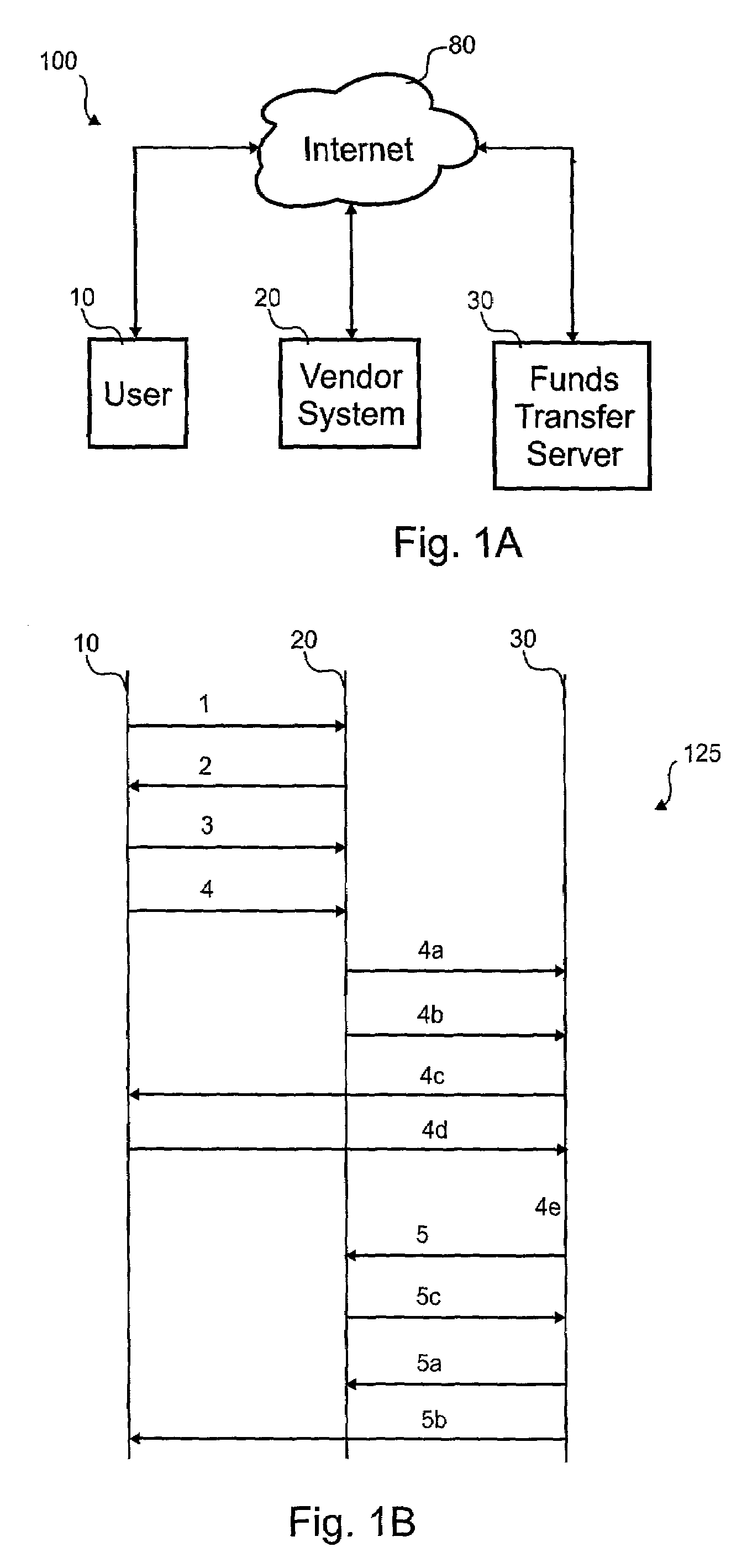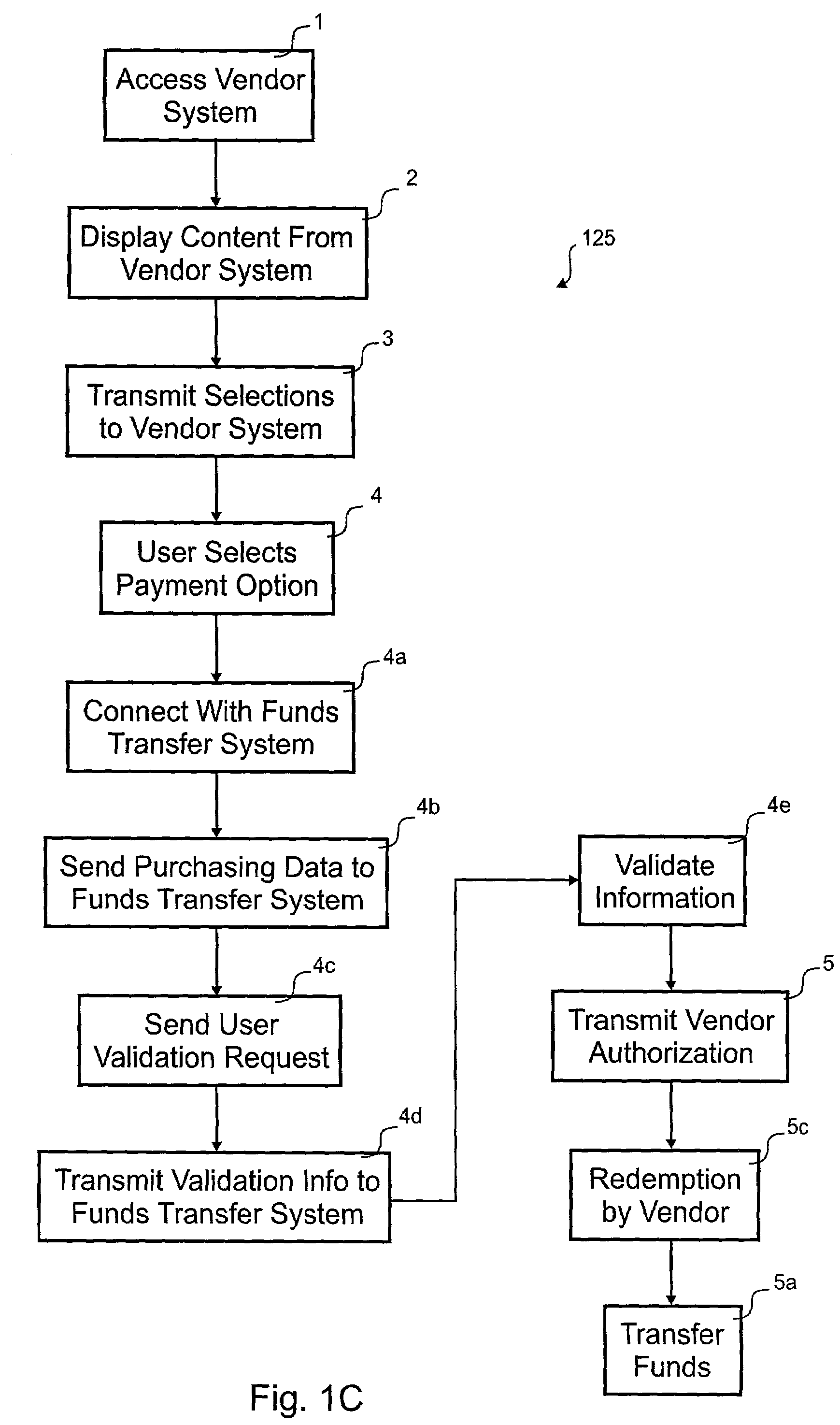Online incremental payment method
a technology of incremental payment and online payment, applied in the field of electronic purchase methods, can solve the problems of increasing consumer fear of the apparent free flow of sensitive personal, financial and other information over the internet, increasing the difficulty of merchants, and increasing the difficulty of merchants, and reducing the service life of consumers
- Summary
- Abstract
- Description
- Claims
- Application Information
AI Technical Summary
Benefits of technology
Problems solved by technology
Method used
Image
Examples
Embodiment Construction
[0035]The ensuing description provides preferred exemplary embodiment(s) only, and is not intended to limit the scope, applicability or configuration of the invention. Rather, the ensuing description of the preferred exemplary embodiment(s) will provide those skilled in the art with an enabling description for implementing a preferred exemplary embodiment of the invention. It being understood that various changes may be made in the function and arrangement of elements without departing from the spirit and scope of the invention as set forth in the appended claims.
[0036]The present invention provides an electronic payment method for incrementally transferring funds between a payor and a payee in an online transaction. The payor configures a funds transfer server for debiting a bank account associated with the payee. Authorization is transmitted by the payee to the funds transfer server to request debits from the payor in the form of a digital IOU. The funds transfer server checks tha...
PUM
 Login to View More
Login to View More Abstract
Description
Claims
Application Information
 Login to View More
Login to View More - R&D
- Intellectual Property
- Life Sciences
- Materials
- Tech Scout
- Unparalleled Data Quality
- Higher Quality Content
- 60% Fewer Hallucinations
Browse by: Latest US Patents, China's latest patents, Technical Efficacy Thesaurus, Application Domain, Technology Topic, Popular Technical Reports.
© 2025 PatSnap. All rights reserved.Legal|Privacy policy|Modern Slavery Act Transparency Statement|Sitemap|About US| Contact US: help@patsnap.com



